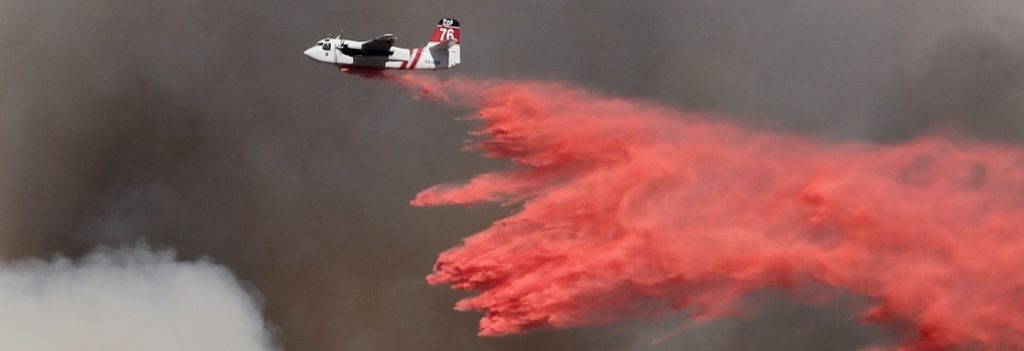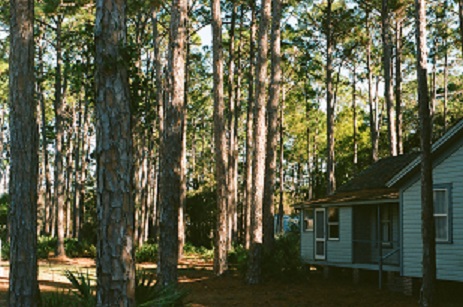
California has changed its laws in wildfire country. Buyers of real estate in in places where the risk of fire is “high” or “very high” will receive information about how the seller cleared the home of surrounding debris, and how the buyer should continue that task, protecting the home from flames and embers. It’s just the latest adjustment to California’s wildfire risk mitigation and disclosure law, prompted by destructive fires in recent seasons.
The Issue
Tens of millions of new households have popped up in risky areas in recent years — and not only in California. Often, it’s a case of follow-the-money. Local governments gain tax revenues when they green-light new developments, including in risky areas. And many, many people buy in without knowing the risks. Wildfire maps haven’t caught up to the heightened risk from continued climate change, which is now causing major fires to keep raging at night.
Only four states have rules around development and wildfire. Moreover, as National Public Radio has observed, most wildfire-prone states don’t require disclosure to buyers or renters.
California and Oregon do have disclosure rules. In Oregon, the seller’s standard disclosure statement mentions the forestland-urban interface. Oregon buyers should be on the lookout for that term. It means a known risk of fire.
In an attempt to save lives and homes, new wildfire disclosure law appears in California’s disclosure requirements. From 2021 on, sellers must inform a buyer if the home meets flammable brush clearing rules; and they must list the home’s potential fire risks. Sellers will soon also have to say if they’ve carried out fire-prevention retrofits.
Here are some details of the California laws that took effect in 2021.
Effective Jan. 1, 2021: Home Hardening Disclosure Law
Home hardening means best practices to help a house, condos or manufactured home stand up to fire. Sellers in designated high to very high fire hazard zones must fill out a Fire Hardening and Defensible Space Advisory for properties built before 2010 — when California established its Wildfire Urban Interface building codes. Defensible space is the continually maintained clearance between anything built on the land, and fire-prone matter around these structures.
California expects home sellers to do the following:
- Provide proof that the home complies with vegetation management laws, dated within the six months leading up to the sale. Otherwise, the two parties must agree, in writing, that the new owner will get documentation after closing.
- Give the buyer a copy of a final inspection report, or instructions on obtaining a copy.
- Supply a list of known features that make the home susceptible to wildfire and ember storms.
- Include the state’s list of cost-efficient retrofits (included in the January provisions, but starting Jul. 1, 2025).
View details of required home hardening disclosures here.
Effective July 1, 2021: Defensible Space Law

In State Responsibility Areas, owners must maintain their properties so they meet California’s building and fire codes. Requirements for clearing brush and debris around the home (as far as the property goes, up to 100 feet) can help halt approaching wildfires and enhance firefighter safety.
The state has added new disclosures to update the standard form for home sales in a high to very high Fire Hazard Severity Zone. Purchase agreement documents now include California’s New Fire Hardening and Defensible Space Advisory, Disclosure and Addendum to record the actions taken to maintain a buffer zone.
Pro tip: There are nonprofits that do free assessments for home-hardening. Ask your real estate agent about them.
Financial Aftermath
After a major fire damages California homes, local assessors collaborate with the California Department of Forestry and Fire Protection (Cal Fire) to determine which properties sustained at least $10,000 in structural damage. Meanwhile, the owners can proactively apply to have their houses reassessed and lower their values for tax purposes. Owners losing at least $10,000 in structural damages will qualify for tax adjustments. Homeowners should complete the Application for Reassessment of Property Damage by Misfortune or Calamity.
Regardless of where a home exists, a homeowner’s insurance policy covers losses from wildfires. Washington State’s Office of the Insurance Commissioner points out the following:
- A homeowner’s policy covers damage from any kind of fire that was not purposefully ignited by the insured person.
- It’s important to review a policy from time to time, and keep enough insurance for the value of the home and possessions.
Pro tip: Scan your home’s interior, to keep track of all your belongings, into a file on your phone. Keep a scanned copy of your insurance policy on your phone, too.
Note that homeowner’s insurance is not the same as a title policy. A title policy protects the owner’s rights and covers the costs of addressing defects and liens on the home’s title.
☛ Read more information about standard and extended title insurance from Deeds.com.
Wildfire Beyond the West
Risks are high in Nevada and Colorado, Texas and Arizona, Montana and Oregon, Idaho and Wisconsin, and the eastern states — and around any outer suburbs where people are building heavily. Most wildfires happen east of the Mississippi.
One in three U.S. homes are now in and around forested areas. As more people buy in these areas, there are more power lines, more fuel and equipment being used, and, generally more risk.
An emergency can happen at any time, says Pennsylvania’s Department of Conservation and Natural Resources. A small yard waste burning session or a fireworks display can become a fire that spreads quickly through dry brush and into the nearest woods.
Add in another risk factor: climate change. Greenhouse gas emissions — from the burning of fossil fuels, from our landfills, factories, and animal farming, and from wildfires themselves — are all intensifying climate change. For homeowners, the rising temperatures are increasing fire hazards nationwide.
Need information for your own area? State natural resources departments and local fire stations have information specific to local prevention and mitigation. Here are some general recommendations.
Home Maintenance for Fire Prevention
Homeowners who live in fire-prone areas should:
- Use fire-resistant siding and roofing, and gutters with closed eaves.
- Regularly clean out the gutters and maintain the roof.
- Install double-paned windows to prevent window failures in case of fire. Properly chosen windows keep glass from breaking or a frame from catching fire, thus keeping fire or embers from getting into a house.
- Remove firewood from the areas around windows.
- Clear dry foliage around the home and other structures, and cut back overhanging trees.
- Use weather stripping and mesh to seal doors and vents from embers.
Often, homes are set on fire by stray embers or by ember storms. The interior of a home can start burning once embers get through an open chimney, a vent, or a crack in a window.
Thinking Ahead
Out-of-control fires destroy woods and animal habitat, and threaten human lives. By the time a wildfire burns out, it can ruin thousands of woody acres. For homeowners and renters, fire hazards in a hot climate need to be known and addressed. Action is needed from state and federal legislatures.
It’s also an issue to put on our personal radar. Knowing the risks where we live, or want to live, is a start.
Supporting References
Bill Gabber for WildfireToday.com: New California Law Requires Seller of Home to Disclose Vulnerability to Wildfires (Jan. 7, 2021).
Lauren Sommer for All Things Considered via National Public Radio: Millions of Homes Are at Risk of Wildfires, But It’s Rarely Disclosed (Oct. 21, 2020).
California Department of Forestry and Fire Protection: Wildfire Is Coming – Are You Ready?
Cheri Carlson for the Ventura County Star: New Real Estate Disclosure Spurs Owners to Protect Homes Against Wildfire (Feb. 23, 2021).
Molly Mowery for The Community Wildfire Planning Center News: California Implements New Wildfire Hazard Disclosures on Real Estate Transactions (Jan. 15, 2021).
MarinCountyRealtors.com: Fire Hardening Resources.
Office of the Washington Insurance Commissioner: Wildfires and Homeowner Insurance.
Photo credits: Ben Kuo and Alex Irimia, via Unsplash.
